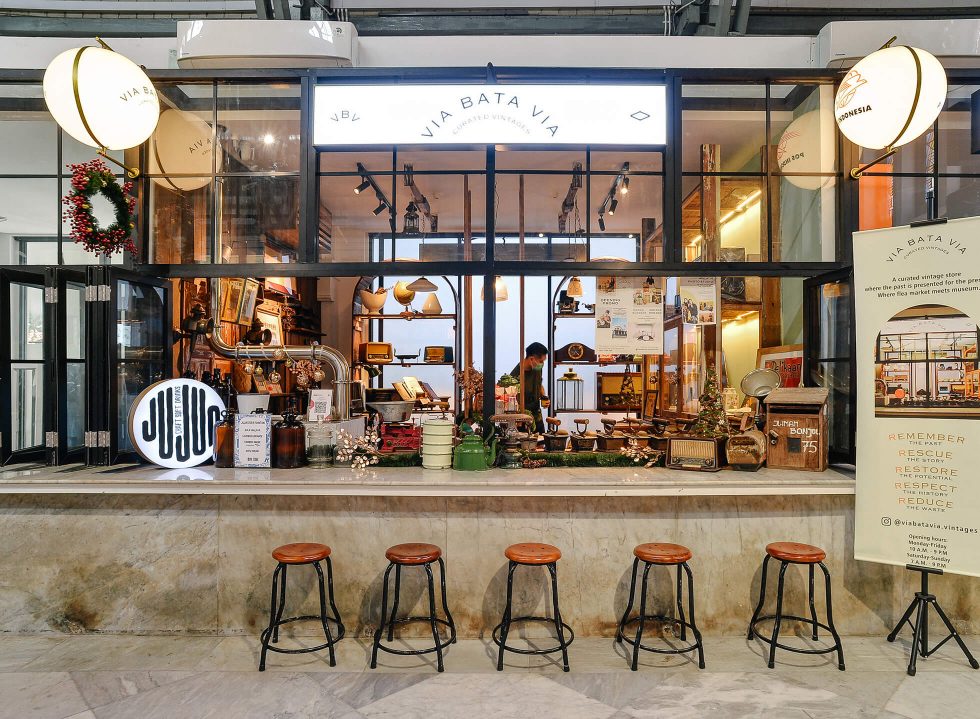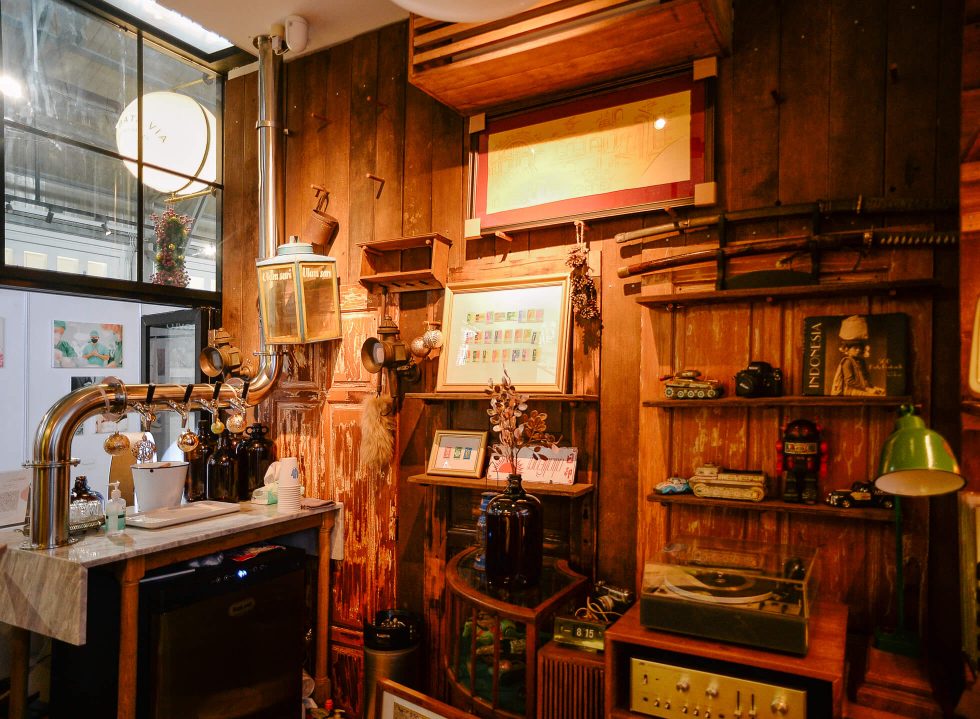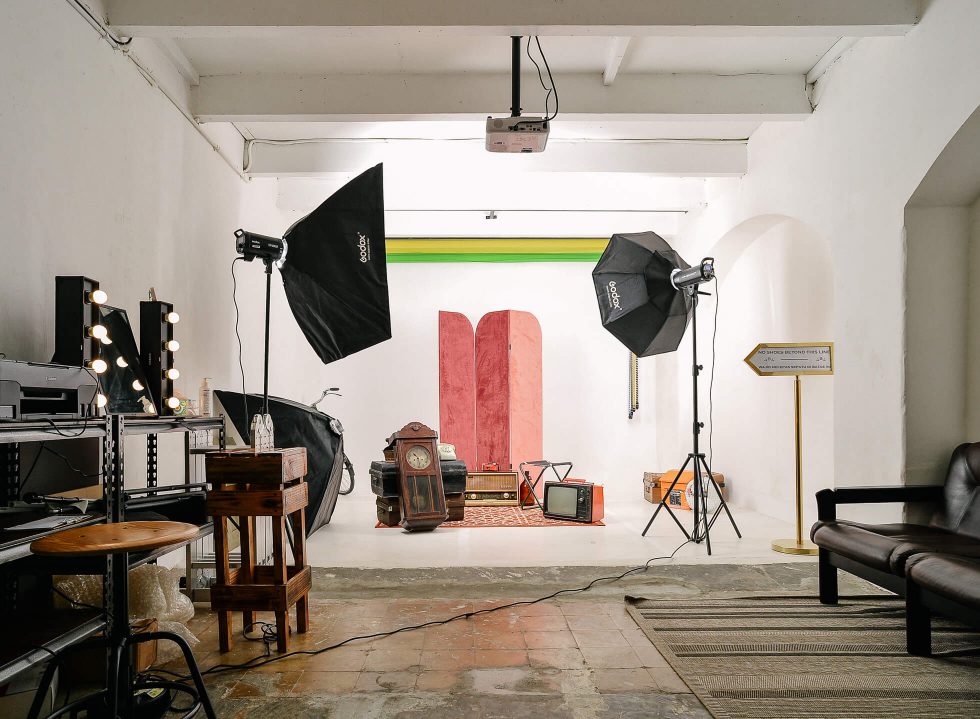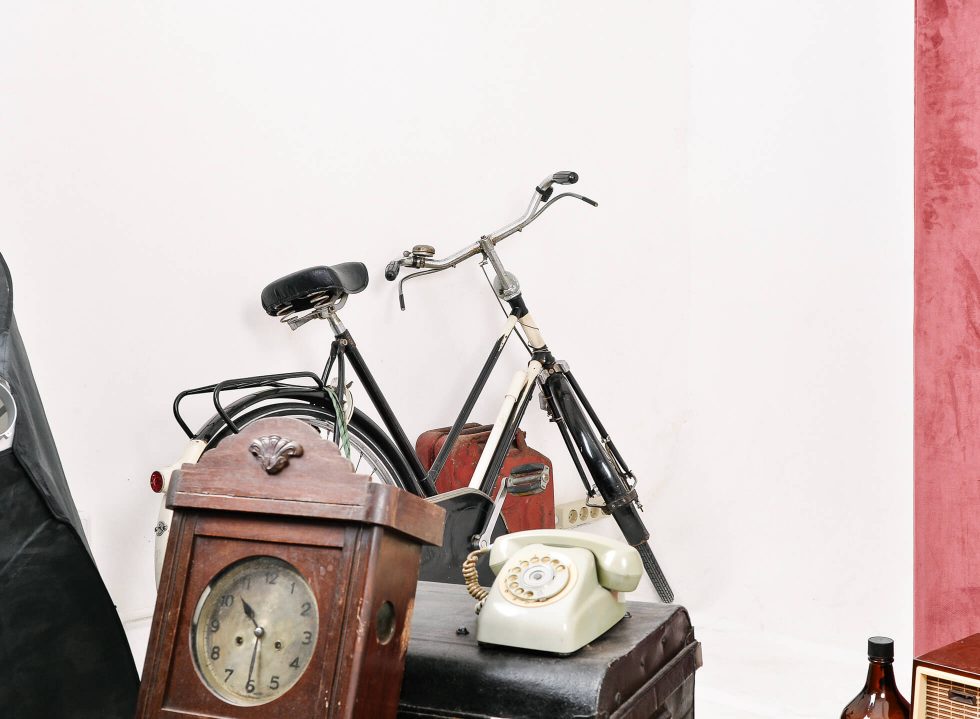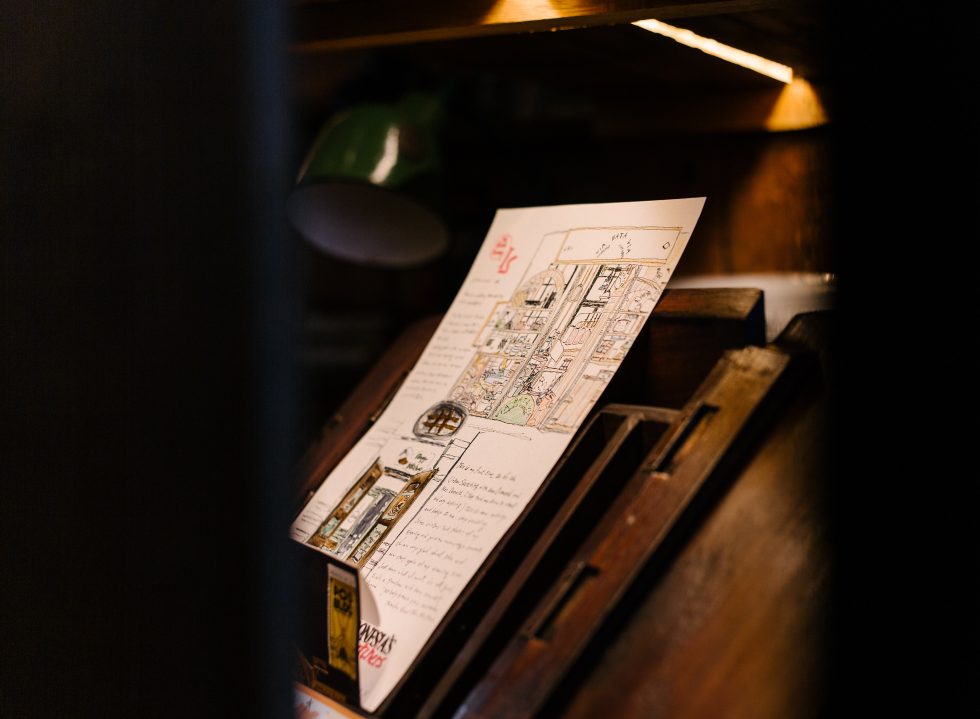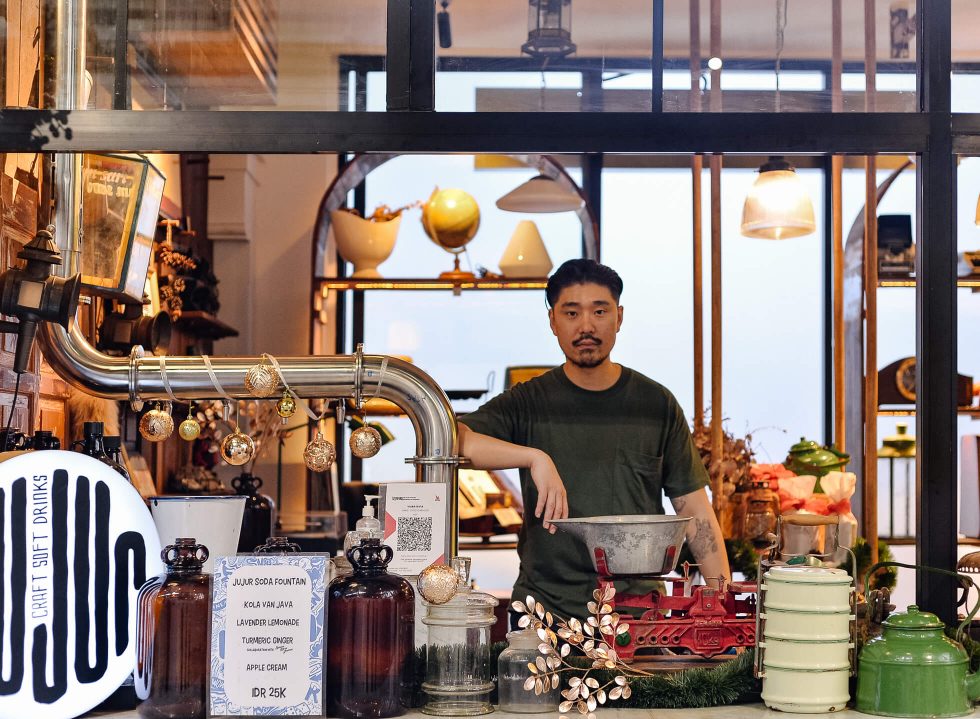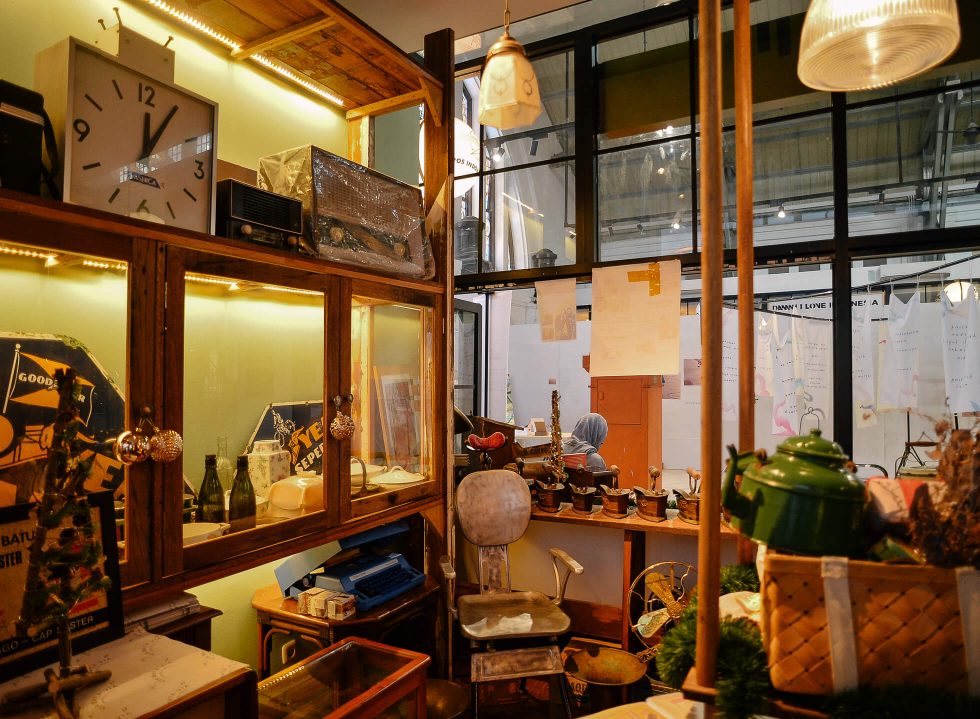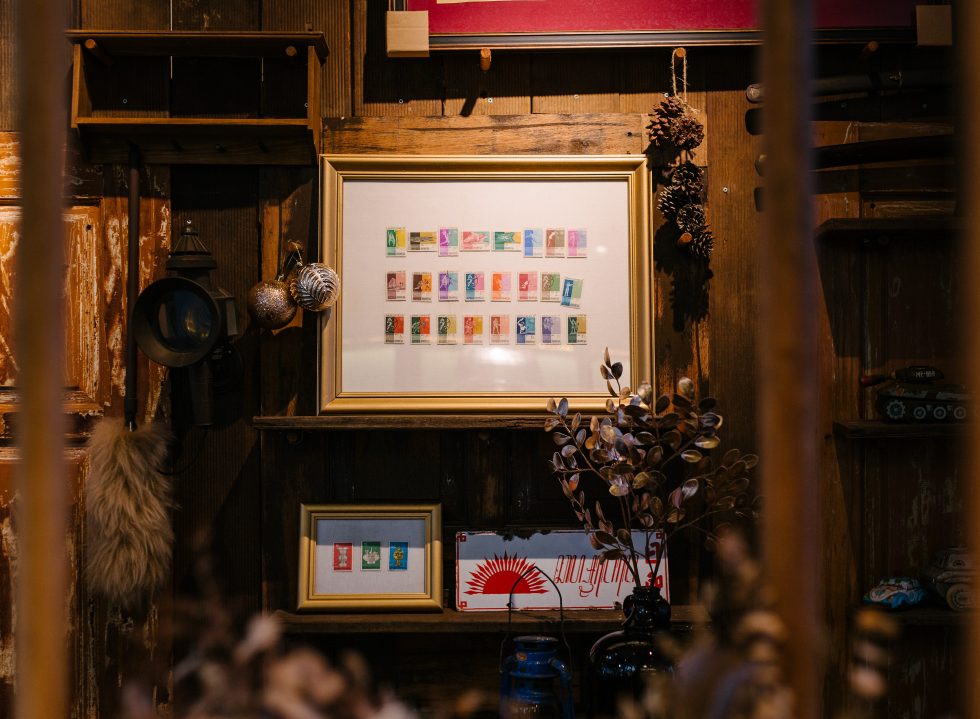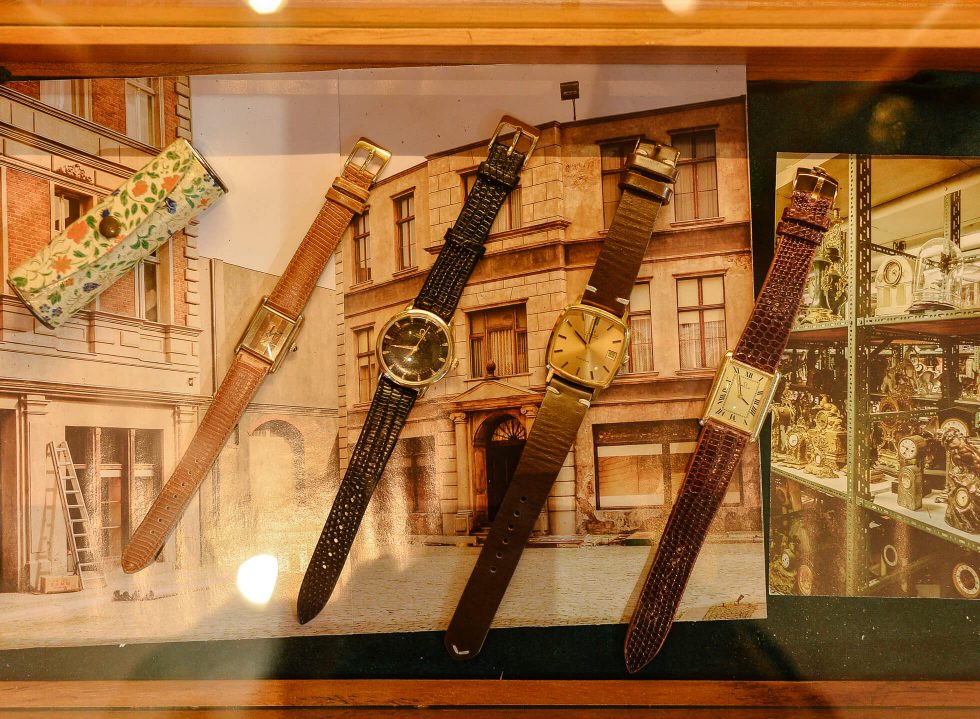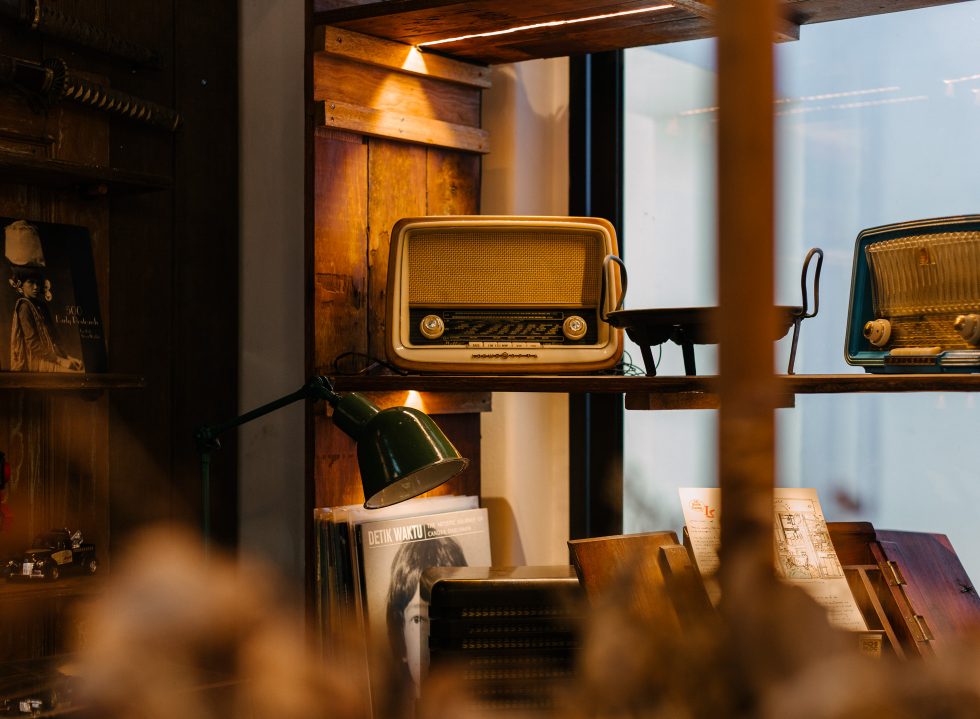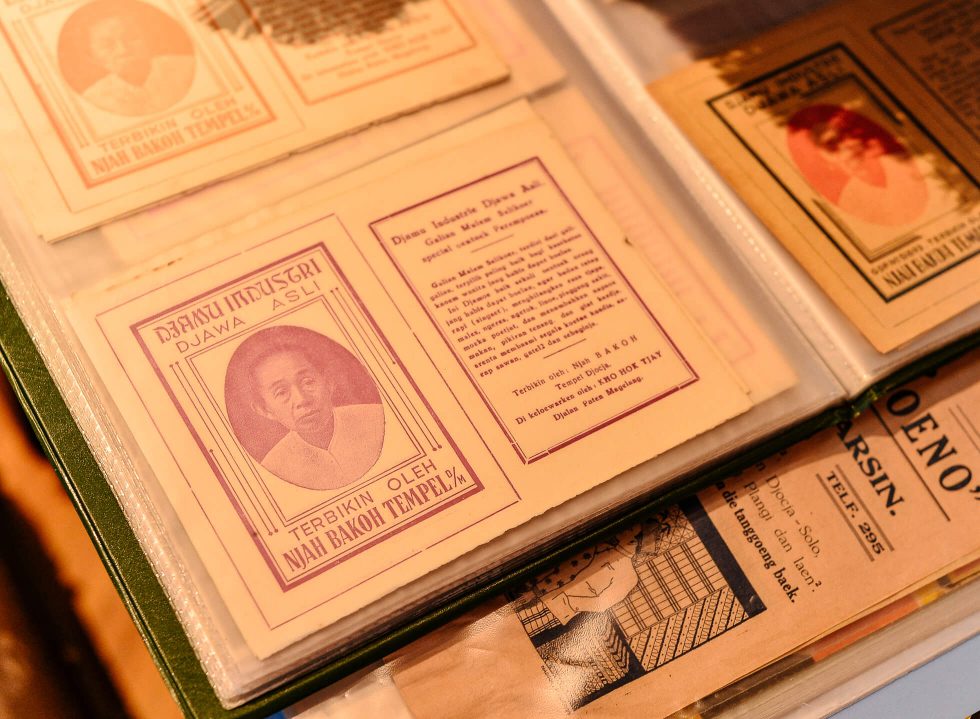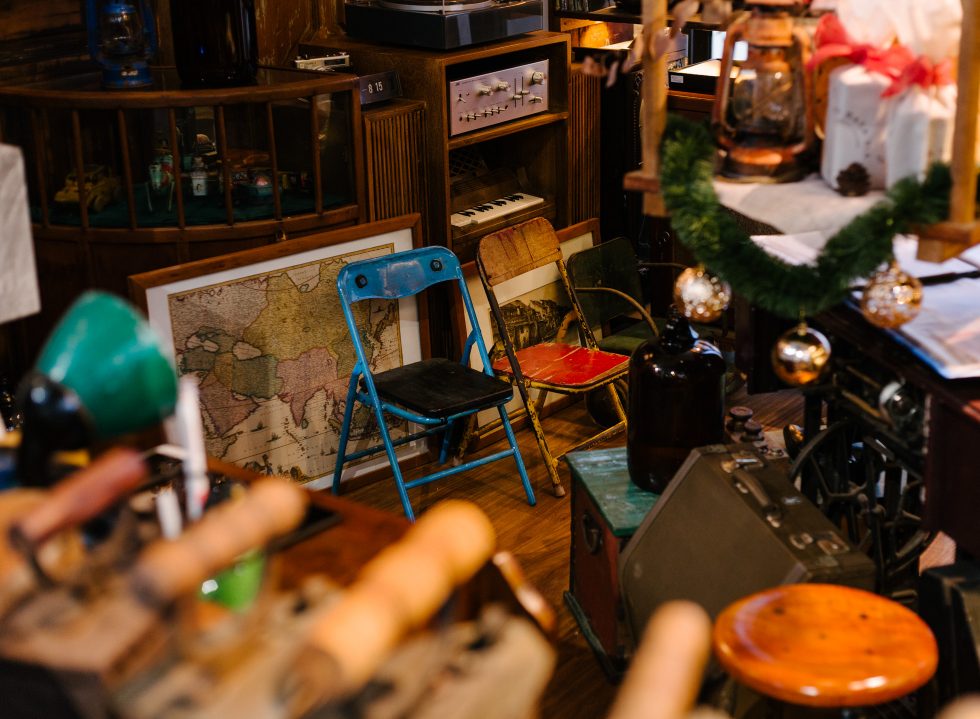What is it with people’s curiosity of the past? Throughout the years, we’ve seen the thirst for all things vintage expressed through various mediums. From establishments like Ding Dong Disko to nostalgic musical projects, maybe it’s a way of rekindling with the romance of bygone eras that today’s generation never got to be a part of. In Via Bata Via, a friendly mash-up between a neighbourhood garage sale and a decadent antique store, the same fascination for the past is unpacked.
Located in the creative hub Pos Bloc, visitors are invited to time travel through the shop’s enchanting curation of vintage trinkets and antiques, as they discover stories rooted in these relics. “We mostly focus on mid-century items,” said founder Edgar Honggo, as he introduced the charming room that houses the store’s collection.
Covered with glass-panelled windows on two fronts, the wood-accented and well-lit interior allows the timeworn items to shine, compelling passersby to pop in and perhaps stumble on its story-filled origins via Edgar himself, or one of the other hobbyists on standby. In the shop, any air of pretence is stripped off and replaced with pleasant conversations on why these artefacts still matter and how their value is not bound by hefty price tags.
In what could be termed as an ‘organised mess’, old radios, rotary dial phones, collectable stamps, analogue cameras and even katanas and enamel signages bedeck the shelves of Via Bata Via, waiting to be picked up by their new owners. Surrounding them, one is likely to come across the likes of a ‘40s Singer sewing machine, a ‘60s brass mini gong, a steel barber’s chair, to carved Javanese teakwood coffers or multipurpose cabinets, all embedded with a past.
Depending on their prior condition, some antiques in Via Bata Via are fully restored with the help of local artisans, while others earned themselves an upgrade in keeping with the times—like the Bluetooth-equipped radio sets, done in collaboration with Kris Jänssen Werks, a Jakarta-based brand known for its curation and restoration of antique radios. Browsing through the items on display, one might feel the urge to dig into the history behind each one: What year is this from? Who used to own it? How do you use this?
This circles back to the crux of Via Bata Via and Edgar’s eagerness to renew a love for all things vintage—a motivation that was sparked following his return from Japan, having witnessed the preservation efforts done for the country’s heritage. He hopes the same desire can be resonated in Indonesia amongst the younger generation. “Kids today won’t recognise a charcoal iron when they see one unless we introduce it to them. So I believe that through these seemingly small things, we can save history one item at a time.”
Preserving culture aside, the store also caters to today’s pressing matter of sustainability. Similar to fashion, the fast furniture industry poses its own environmental issues, producing tons of waste as people discard old furniture for new ones. Compounded with the ‘planned obsolescence’ business trend in the tech world—which sees electronics becoming seemingly unusable after a short period of time, the damage can be seen in how old household items are treated in general. “All too often we see things getting thrown away too easily when those things still have value,” observed Edgar.
Hence why 70 per cent of the store’s catalogue is now filled up with consignments of preloved items and old-time collectables from the local vintage community, in addition to Edgar’s own collection that he hunted from cities like Solo, Yogyakarta and Bali. Just like thrifting in fashion, Edgar believes that giving these time-honoured items a new home can be a good way to reduce waste being put out to the environment.
As for the sustainability-minded customers, vintages can be a relatively affordable means of decorating one’s home with unique pieces that last—something that cannot be expected from mass-produced commodities. Indeed, market appreciation is still something to watch out for (some antiques can have an unexpectedly dear price tag), but a scroll through Via Bata Via’s website help eases that concern; for one, customers can bring home a piece of well-preserved wooden furniture for about the same price as its particleboard counterpart from a big manufacturer.
In hindsight, Via Bata Via is embraced like a full-circle moment, where antiques and vintage pieces travel back and are given a new place for newfound appreciation. While many of the sales still come from hobbyists, Edgar remains confident that the time is ripe for vintages to shine. “Vintage goods are often still identic to middle-aged men and exorbitant price tags. We want to dispel that image, and prove that vintages can be fun and affordable while bridging the past and present,” Edgar promised.
